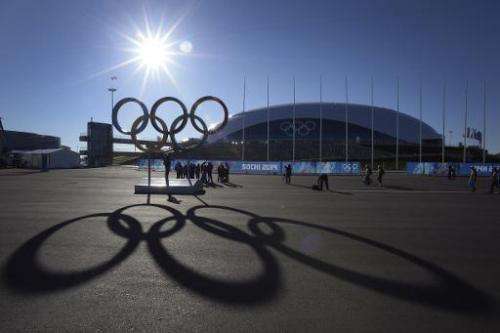Truck in the snow: Warming to hit future Winter Games

Global warming is casting a lengthening shadow over future Winter Olympics, boosting the risk that skiers will be competing on artificial or trucked-in snow, a new study suggests.
Out of 19 resorts that hosted the Winter Games from their inception in 1924 to 2010, just 10 or 11 will be "climatically reliable" by the 2050s, meaning that they can be depended on to have a bed of snow in February.
By the 2080s, as few as six of them would remain in this category, according to the probe, which bases these forecasts on trends in greenhouse-gas emissions.
"Internationally renowned Olympic sites... simply would not be cold enough to reliably host the Games," the paper warns.
Afflicted Olympic venues would include Squaw Valley in the United States, Grenoble in the French Alps, Garmisch-Partenkirchen in Germany and Russia's Sochi, where the 2014 Games are scheduled to start on February 7.
The investigation, headed by Daniel Scott at the University of Waterloo in Ontario, notes that over the decades, Games hosts have worked hard to overcome the uncertainties of weather.
Over the past 70 years, ice hockey, figure skating and curling have been moved indoors; bobsled and luge competitions shifted to refrigerated tracks; and weather forecasts have become smarter and and more detailed.
But at the same time, average temperatures at Olympic venues have shot up.
The average daytime temperature in February in these locations soared from 0.4 degrees Celsius (33 degrees Fahrenheit) between the 1920s and the 1950s to 7.8 C (46 F) in the early 21st century.
But only part of this rise was due to global warming, say the scientists.
The rest was due to the readiness of the International Olympic Committee (IOC) to award the Games to warmer locations. Snow-making machines became a fixture of the Games in the 1980s.
Krasnaya Polyana, the station used for the Sochi Games, lies at 568 metres (1,846 feet), making it the fifth lowest in altitude in Winter Olympics history. Russia has stockpiled snow in the event of a weather mishap.
The researchers based their forecast on two well-known scientific scenarios for the rise in heat-trapping carbon gases.
Under a low-emissions scenario called RCP2.6, average February temperatures in the 19 former Olympic locations would rise by 1.9 C (3.4 F) by mid-century and 2.7 C (4.9 F) by late century compared with today.
Under a high-emissions scenario, RCP8.6, the rise would be 2.0 C (3.6 F) by mid-century and a whopping 3.7 C (6.7 F) by late century.
The simulations are based on computer models used by the UN's Intergovernmental Panel on Climate Change (IPCC), coupled with projections about temperature changes locally.
As to whether a resort would be "climatically reliable" or not, this is based on whether there would be a stable snow base of at least 30 centimetres (12 inches) on February 1.
"Because alpine terrain for elite downhill competitions is not always very smooth, this is an optimistic threshold, as a snow base of 60cm (24 inches) or more would be needed in many locations," the study notes.
The investigation appears in a specialist journal, Current Issues of Tourism.
© 2014 AFP


















